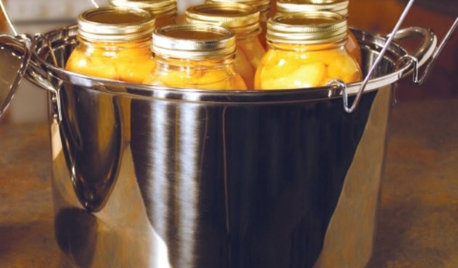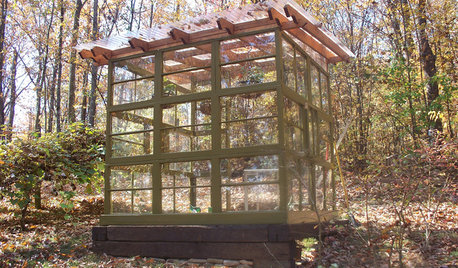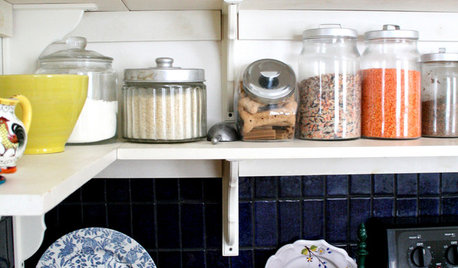Canning Project: Heirloom Tomato Salsa
billbird2111
15 years ago
Related Stories

PRODUCT PICKSGuest Picks: Canning, Preserving, Steaming, Dehydrating
20 products to help make fall produce last through the season and beyond
Full Story
FARM YOUR YARDHouzz Call: Home Farmers, Show Us Your Edible Gardens
We want to see where your tomatoes, summer squashes and beautiful berries are growing this summer
Full Story
GARDENING AND LANDSCAPINGSee a Family Greenhouse Grown From Scraps
Can-do resourcefulness and less than $400 lead to a new 8- by 8-foot home for plants on a Tennessee family's property
Full Story
GARDENING AND LANDSCAPINGDig This Garden Shed Makeover for Less Than $300
New paint, accessories and raised vegetable beds turn a drab outpost into a colorful charmer
Full Story
EDIBLE GARDENSHouzz Call: What Did You Grow This Summer?
Let’s celebrate the homegrown fruits and vegetables of the season. Post your pictures and tell us about your harvest
Full Story
GARDENING AND LANDSCAPINGWorld of Design: 10 Home Gardeners Show Us Their Sweet Summer Harvests
From New York to Tokyo, these gardeners have turned their yards, terraces and rooftops into places of bounty
Full Story
KITCHEN DESIGNDisplaying Kitchen Supplies — Hot or Not?
Do some kitchens just beg for a cozy row of canisters and gear for all to see? Have a look and let us know what you think
Full Story
SMALL SPACES8 Challenges of Cottage Living
‘Small rooms or dwellings discipline the mind,’ Leonardo da Vinci once said. Just how much discipline can you handle?
Full Story





readinglady
digdirt2
Related Professionals
Clermont Landscape Contractors · Peabody Landscape Contractors · Stamford Landscape Contractors · Braintree Landscape Contractors · Eagle Landscape Contractors · Fort Wayne Landscape Contractors · Lake Worth Landscape Contractors · Methuen Landscape Contractors · Northport Landscape Contractors · Panama City Beach Landscape Contractors · Greenfield Landscape Contractors · Eastlake Landscape Contractors · Buckhead Atlanta Roofing & Gutters · Des Plaines Driveway Installation & Maintenance · Eustis Driveway Installation & Maintenanceksrogers
reaverg
ksrogers
billbird2111Original Author
digdirt2
readinglady
billbird2111Original Author
ksrogers
digdirt2
melva02
billbird2111Original Author
korney19
billbird2111Original Author
zabby17
bella_trix
mom2wildboys
digdirt2
mom2wildboys
ksrogers
digdirt2
melva02
ksrogers
zabby17
ksrogers
billbird2111Original Author
mom2wildboys
digdirt2
melva02
korney19
mom2wildboys
melva02
zabby17
korney19
valereee
annie1992
billbird2111Original Author
zabby17
billbird2111Original Author
dogear6
billbird2111Original Author
billbird2111Original Author
billbird2111Original Author
readinglady
zabby17
annie1992
Mellee9